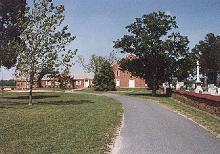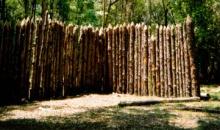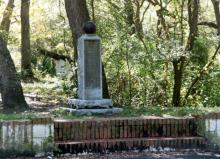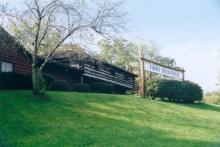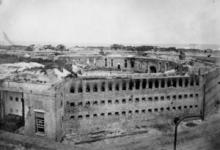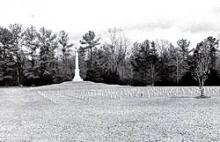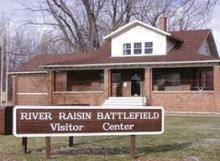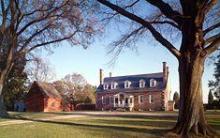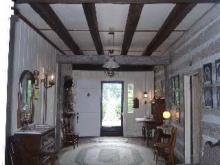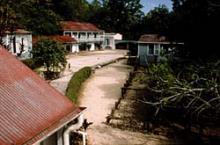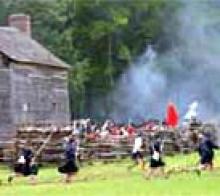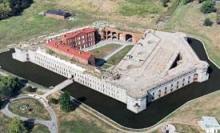Lotz House

In 1855, German immigrant Johann Albert Lotz purchased five acres of land from Fountain Branch Carter. Three years later in 1858, after doing most of the work himself, Lotz completed his home. By trade, Mr. Lotz was a master carpenter and a piano maker. He also repaired guitars and violins. His home served as his “show house” to demonstrate his carpentry work to potential clients. The three fireplace mantles demonstrate his range from simple to very complex designs.
There are also several battle scars including the charred, rounded indention in the wood flooring where a cannonball flew through the roof, a second story bedroom, and then landed on the first floor and rolled. In addition, the home has an impressive solid black walnut wraparound handrail that starts on the ground floor and wraps all the way around to the second floor. To accomplish this engineering feat in the mid-nineteenth century is truly remarkable. What’s more, the newel post at the bottom of the staircase is actually an inverted leg of one Mr. Lotz's pianos. The outside of the home indeed is a testament to Mr. Lotz's talent. All the handcarved acorn finials, millwork, and cartouches were constructed by Lotz. The Lotz House is the perfect complementary companion to the historic Carter House, historic Carnton Plantation and the McGavock Confederate Cemetery. It takes only 110 short steps to walk from the front door of the Lotz House to the front door of the Carter House located directly across the street, and Carnton is just one mile away.
The house, which has been on the National Historic Register since 1976, is located in the heart of downtown historic Franklin, Tennessee, at “the epicenter” of the Battle of Franklin, which was a pivotal battle of the Civil War on November 30, 1864. On the night of November 29, 1864, approximately 20,000 Union soldiers retreated from Spring Hill, Tennessee into Franklin, Tennessee. These troops quickly dug protective trenches and made barricades with everything they could get their hands on, including the Lotz's white picket fence. They waited to see if they would be attacked by the Confederate Army. When the Lotz family awakened on the morning of November 30, they found the main Union Line had been established approximately 100 yards south of their home. Mr. Lotz feared that his family, his wife Margaretha, his sons Paul and Augustus and daughter Matilda would not survive the battle in their “wooden plank house.” They sought refuge in the brick basement of the Carter House, a home across the street. For 17 hours while the horrific battle raged all around them, the Lotz family, along with 20 other people, remained safe and survived. When they exited the basement the next morning, they were horrified to see the bodies of dead soldiers “so thick that you couldn’t take a step without walking on one of them” between The Carter House and their home across the street.
Indeed, historians describe the fighting that took place at the Battle of Franklin and in the Lotz front yard as “some of the most severe hand-to-hand fighting during the four-year-long-war.” When the dust had settled, the body count would be staggering. Ten thousand Americans had been killed, wounded, captured, or missing. The Lotz house served as a hospital for the wounded soldiers on both sides until the following summer. To this day, one can step into the Lotz House and see numerous blood stains in all of the rooms. The house itself suffered severe battle damage, but as the structure served as Lotz’s “show house,” he was quick to make repairs. However, some of the battle scars do remain. During the battle a solid shot cannon ball crashed through the roof, smashing into the floor of an upstairs bedroom and down to the first floor. The large repaired patch made by Mr. Lotz remains in the second floor. And on the first floor where the cannonball finally came to rest you can clearly see where the hot lead ball first hit, burning the floor as it rolled.










